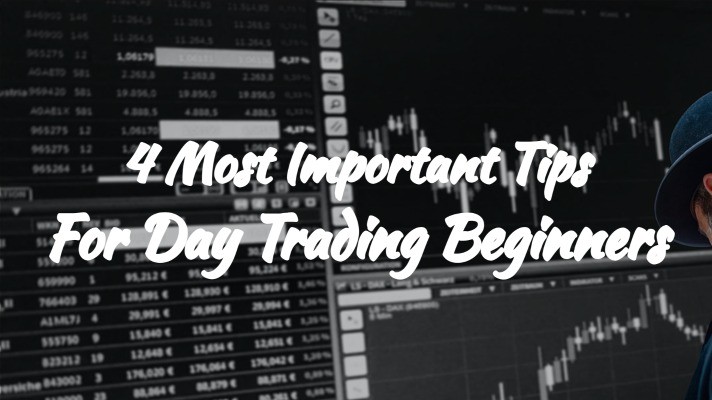In the financial world, dark pools are confidential exchanges where investors can trade securities not available to the general public. The name of such deals, investors also recognize as “dark pools of liquidity,” is a recognition that they operate in complete secrecy. When investors first established dark pools, they primarily used them to enhance block trading by investment firms that did not want to disrupt the markets by placing large orders and receiving negative rates for their trades. Let’s find out more about dark pool data.
They play an essential role in allowing large trades to take place without affecting the rest of the market. Although they are not transparent, they are susceptible to possible conflicts of interest by their stakeholders and exploitative malpractices by some elevated traders because of their lack of transparency.
Privacy of Dark Pool Data
Smart Example of Dark Pool Data
Dark Pool Data. All You Should Know
Although dark pool data is intrinsically confidential, there have been some recent attempts to render dark pool data more accessible to the public. Retail traders now have access to dark pool data feeds thanks to the emergence of a few vendors and systems that cater to their needs. Despite the high costs of data collection, the techniques may be well worth the investment. When it comes to dark pool data, it is essential to consider that information from the trade side never accompanies it. As a result, we can never tell whether a trade was in a purchase or sold market position.
Dark pools, like stock exchanges, rely on customers to trade in them since they require transaction orders to function. Many dark pools now accept relatively small orders with smaller transactions to attract more deals and thus increase liquidity in the marketplace (affluence of orders at varying prices from many diverse market participants).
Over the past few years, the number of orders executed in dark pools has steadily decreased, and dark pools are no longer the exclusive domain of large financial institutions. According to estimates, 40% of completed trades in the United States get finalized in a dark pool, with a similar proportion in Europe at approximately 20%.
The Benefits of Using Dark Pools

The following are some significant benefits of dark pools:
Trading on a Private Basis
Dark pools are places where traders can execute trades away from the scrutiny of public markets. Stock markets tend to overreact or underreact because of media coverage and market sentiment. Transactions that cause price overreaction or underreaction are made possible through trading pools.
Preventing Price Devaluation From Occurring
As previously stated, dark pools allow for traders to execute large trades with less concern about being front-runners. Dark pools enable the breaking down of large transactions into smaller deals and implementation before the cost of security depreciates.
It’s comparable to attempting to execute a large trade on a single exchange, in which the price will almost certainly have dropped by the time the order gets filled.
Improved Liquidity and Market Efficiency
Such a benefit is debatable because liquidity on a private exchange can dwindle quickly, making it difficult to trade. However, investors think high-frequency trading (HFT) and other algorithmic trading techniques improve market efficiency because information gets priced into securities rapidly. Because dark pools make high-frequency trading (HFT) possible, it is possible to argue that dark pools also boost market efficiency.
Disadvantages of Dark Pools
The following are some of the drawbacks of using dark pools:
There Is a Lack of Transparency
Because dark pools operate with minimal supervision and control, they frequently face criticism for not placing as many rules in place as other public exchanges, which is understandable. As a result, many people believe that investors who trade on stock exchanges are taking advantage of them.
Unjust Advantages
There are many opponents of high-frequency trading (HFT) because it gives some investors gain that other investors cannot complement, particularly on private exchanges. It can conceal other dishonest investment practices and conflicts of interest in dark pools.
Signature Prints From the Dark Pool

Alternatively known as Late Signature Orders, Signature Prints are dark pool orders that take advantage of a loophole by directing the order via European trade desks, allowing them to disclose the trade approximately 24 hours after its execution. Investors trade Signature Prints primarily on the exchanges that trade IWM, SPY, QQQ, and DIA.
Signature prints can provide more insight into market extremes, allowing traders to predict better when and where corrections might begin or end. When a significantly greater number of signature prints than the daily average begin to arrive, it may indicate that the institution is preparing for a significant move.
You can use the trade price compared to the present day’s worth to help you determine which side to take. Because reports of Signature Prints’ earnings frequently come a day late, it is not unusual for the stock to have traded at a different price from the reported cost during the new trading day.
Data From Dark Pools and Front-Running
In the stock market, front running occurs when another trader is aware that you are almost buying (or selling) a stock, so the trader purchases (or sells) that stock before you can do so and then instantly resell the stock to you at a higher cost. Front running is unethical and should be prohibited, but regrettably, front running continues to occur in dark pools.
For these actions, some dark pool users have paid fines, and others face legal action as a result. Regulators have fined some dark pools for violating the rules and meeting the displeasure of regulators. Due to the lack of transparency from dark pools, there is a strong temptation to place orders in advance. Be cautious and familiarize yourself with the dark pools where your orders trade.
Investors in Dark Pools Should Consider These Points
- If you’re thinking about investing in dark pools, you should consult with a financial consultant to ensure it’s the best option for your situation. Locating a skilled financial advisor does not have to be a complicated process.
- Before you consider investing in a dark pool, consider each of the different types of investments available. You can choose from various investment options, including stocks, bonds, and mutual funds, to meet your needs.
Is Dark Pool Data Right for You?
Although dark pools are not a new concept, the policy will change how they conduct their business and operations. The need to trade large blocks of stocks with little impact on the market will be a part of the trading environment. That is why brokers discussed and reached an agreement on block trades outside of regular stock market trading sessions before the establishment of dark pools. Dark pools are a continuation of the evolution that occurred during those times. Dark pools, when controlled relatively and according to clearly defined rules, can be helpful to investors seeking both price advancement and the least amount of price impact.
Questions and answer
What are signature prints in the context of dark pools?
Signature prints are patterns of trading activity that are specific to a particular investor or group of investors. These patterns can be detected through analysis of trading data from dark pools, which are private exchanges where traders can buy and sell securities without revealing their orders to the public.
Example: A trader who consistently buys large blocks of stock in a particular company may have a signature print that is characterized by a high volume of trades at specific times of day and in specific increments (e.g. 10,000 shares every hour). This signature print could be detected through analysis of trading data from dark pools.
What is the SPY dark pool?
The SPY dark pool is a private exchange operated by Credit Suisse for trading exchange-traded funds (ETFs). It is one of the largest dark pools in the world, and it is known for its high volume of trading activity and liquidity.
Example: On a given day, the SPY dark pool may show a high volume of trading activity in the technology sector, with a large number of trades in companies such as Apple and Microsoft. This could be indicative of increased interest in the tech sector among traders using the SPY dark pool.
What is the best dark pool scanner?
There are many dark pool scanners available, and the best one for you will depend on your specific needs and preferences. Some popular options include Trade Alert, Dark Liquid, and WhaleWisdom. It may be helpful to compare features and pricing for different scanners to determine which one is the best fit for you.
Example: Trade Alert is a popular dark pool scanner that offers real-time alerts on large trades and block activity in the U.S. equity market. It also provides detailed reports on institutional trading activity and has a user-friendly interface.
Where can I find real-time dark pool data?
Real-time dark pool data is generally not available to the public. However, some data providers and financial news organizations offer access to real-time or near real-time data on dark pool activity. These services may be subscription-based and may require a fee to access.
Example: Bloomberg Terminal is a financial news and data platform that offers real-time data on dark pool activity, as well as other financial market data. Users can access data on trades, orders, and volumes in dark pools, as well as track specific securities and traders.
What is dark pool short interest?
Dark pool short interest refers to the volume of short selling activity that is taking place in dark pools. Short selling is a trading strategy in which an investor sells a security that they do not own, with the expectation that they will be able to buy it back at a lower price in the future. Dark pool short interest can be an indicator of market sentiment and can be used by traders to make informed decisions about their trades.
Example: A trader who is interested in shorting a particular stock may use data on dark pool short interest to help inform their decision. If the dark pool short interest in the stock is high, it may indicate that other traders are bearish on the stock and are expecting its price to decline. The trader could use this information to support their own decision to short the stock.
The bottom line
In conclusion, dark pools play an important role in the financial markets, but it is important for traders to understand their limitations and the risks associated with trading in dark pools. By staying informed about dark pool data and using the right tools and resources, traders can make informed decisions about their trades and manage their risk effectively.







